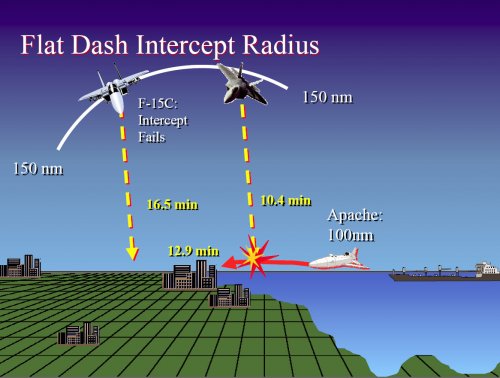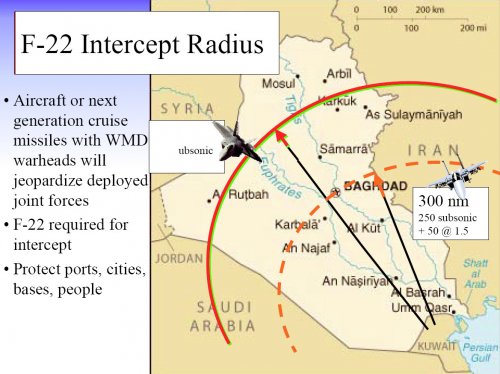donnage99
ACCESS: Top Secret
- Joined
- 16 June 2008
- Messages
- 1,355
- Reaction score
- 861
http://www.aviationweek.com/aw/generic/story_generic.jsp?channel=awst&id=news/aw020909p2.xml&headline=F-22%20Design%20Shows%20More%20Than%20Expected
F-22 Design Shows More Than Expected
Feb 8, 2009
By David A. Fulghum
Hoping to win support for F-22 production beyond the current 183 aircraft, Lockheed Martin is revealing proprietary data that show performance in several areas is better than baseline requirements.
Moreover, the U.S. Air Force is taking the fighter to the Paris air show for the first time this summer, says Larry Lawson, executive vice president and general manager of the F-22 program. The promise of additional U.S. and, possibly, foreign sales has removed any obstacles.
The problem confronting the company is that Raptor backing is splintered. Senior Pentagon acquisition officials want to shut down production to cut defense spending. Congress wants more production to keep aerospace industry jobs going. Air Force leadership is setting on a new minimum requirement for 240-250 aircraft (about another 60 F-22s) but hasn't made the new number public, apparently waiting to introduce it as part of the Quadrennial Defense Review.
Another emerging issue is that some of the early, 550 low-rate-production F-35 Joint Strike Fighters will cost more (roughly $200 million each) than the $142 million it takes to buy a Raptor. That puts the Air Force in the position of spending its near-term fighter recapitalization money on aircraft they can't deploy until about 2014.
In addition, the secrecy-obscured question of just how good the F-22 is as an air-to-air combat design remains unanswered. It's a complex issue that involves the world of electronic surveillance and attack, information operations, network-centric roles and advanced radar. Right now, the F-22 is one of only two stealth fighters being flown. That may change in a decade as Russia and China introduce new designs. Advanced F-15 radars have a slightly greater range, but the F-22 can use its stealth to move closer to targets. U.S. aggressor pilots work daily to find ways to outmaneuver F-22s, but so far they've only accomplished a few kills, always by some fluke, says Lawson.
The F-22's newly revealed areas of overperformance include a radar cross section that officials will only characterize as "better" than what was asked for. Pentagon officials have said privately that the desired signature from certain critical angles was -40 dBsm., the equivalent radar reflection of a steel "marble." By comparison, the F-35 Joint Strike Fighter has a signature of -30 dBsm., about the size of a golfball.
Supercruise is at Mach 1.78 rather than Mach 1.5. Acceleration - although company officials would not say from what speed or at what altitude - is 3.05 sec. faster than the requirement of 54 sec. In nonafterburning, full military power, the Raptor can operate at slightly above 50,000 ft. However, it is known that the F-22 opened its aerial battles at about 65,000 ft. during its first joint exercise in Alaska, apparently using afterburner. There is also a mysterious admission that the range of the Raptor's Northrop Grumman/Raytheon active, electronically scanned array (AESA) radar has a range 5% greater than expected. That means a cushion of an additional 5-6 mi. of detection range against enemy aircraft and missiles.
Ranges of the new lines of AESA radars are classified. But they are estimated at about 90 mi. for the smallest (aimed at the F-16 radar-upgrade market). The F/A-18E/F and F-35 (with radar ranges of 100 mi.) are followed by the F-22 (110-115-mi.). The largest is carried by the upgraded F-15Cs and Es (125 mi.). By comparison, the range for a mechanically scanned, F-15C radar is 56 mi. according to Russian air force intelligence. U.S. aerospace officials agree that an AESA radar "at least doubles" the range over standard military radars.
When coupled with the electronic techniques generator in an aircraft, the radar can project jamming, false targets and other false information into enemy sensors. Ranges for electronic attack equal the AESA radar plus that of the enemy radar. That could allow electronic attack at ranges of 150 mi. or more. The ability to pick out small targets at a long distance also lets AESA-equipped aircraft find and attack cruise missiles, stealth aircraft and small UAVs.
Lockheed Martin also makes an economic argument for continuing Raptor production. The F-22 unit cost in a USAF multiyear purchase is $142.6 million (average unit flyaway cost). Initial unit cost of the F-35 will be around $200 million and then start dropping as production continues. In Japan, the decision to indigenously build small numbers of F-15Js and F-2s (a larger F-16 design) drove their cost to roughly $100 million each. The Eurofighter Typhoon would likely cost even more in a small production run.
"If the [U.S.] wants to do a foreign military sale or sustain those [high-tech F-22 production] jobs longer or wanted to keep its [stealth fighter] insurance policy in place longer, it would have an option" if it continued production until 2014, says Lawson. "We're hoping for a positive decision to keep production going and allow the [U.S.] administration the time it needs to study the problem further to make a decision about what the ultimate quantity is. If you build more, they cost less."
The operational arguments focus on combat effectiveness against top foreign fighter aircraft such as the Russian Su-27 and MiG-29. Lockheed Martin and USAF analysts put the loss-exchange ratio at 30-1 for the F-22, 3-1 for the F-35 and 1-1 or less for the F-15, F/A-18 and F-16.
The speed of pilot training also has offered surprises. The first class of four first lieutenant F-22 pilots - with no experience in another operational fighters - has graduated from Raptor training, says David Scott, Lockheed Martin's director of F-22 business development. In addition, a second, full class of 13 pilots, just out of advanced jet training, has been selected for direct transition to the Raptor. Scott says the new pilots have far fewer habits to unlearn, and they adapted more quickly to improvising with the F-22's advanced network-centric capabilities.
Another element of the formula is that 183 Raptors - with production ending in 2011 - provide the U.S. with only 126 combat-coded (capable) aircraft, says Lawson. Of those, only about 100 would be operationally available. A fleet of 183 F-22s would require the Air Force to continue using 177 F-15s through 2025 for air superiority roles, and the end of production would kill any chance for a foreign military sale, he says.
However, if production were extended by three years to 2014, when planners hope the U.S. economy will be stronger, company analysts say the number of operational F-22s would grow to 180, says Lawson. They would be supplemented by the first 68 F-35s, and foreign military sales of the F-22 would become feasible, he adds. While Australia has definitely dropped out of the chase for F-22s, Japanese and Israeli officials say even a single squadron would provide a large boost in deterrence to other military forces.
Russian opinions of the F-22's capabilities vary from awestruck to dismissive, according to a Jan. 26 article in Pravda (english.pravda.ru/world/americas/107010-raptor-0).
The stealthy fighter poses a "great danger to any modern missile defense system," says Konstantin Sivkov, vice president of the Academy for Geopolitical Sciences, with a "wide range of opportunities to defeat [air defenses]. Enormous speed . . . maneuverability and its airborne equipment . . . make it a very powerful and dangerous aircraft." However, the Raptor "should not be overestimated," says Alexander Khramchikhin, a specialist with the Institute of Military and Political Analysis. "It is radar-detectable and it is destructible." The Pravda article says the U.S. considers Russia and China as its "first and foremost threats [and] that the two countries may have "fifth-generation fighters during the upcoming 5-10 years."
Advanced air defense systems - called SA-20 and SA-21 by NATO and S-300 and S-400 by the Russians who export them - can only be penetrated by stealthy aircraft, say U.S. experts. The Russians note that their missiles are purely defensive (although that would be a tough argument to make in the Middle East) and that the S-300 is exported to a only few countries. In addition, the S-400 cannot be found outside Russia, and it equips only two divisions within the country, they assert. However, exports of such high-threat, "double-digit" surface-to-air missiles have been made to China, Vietnam and Syria, and are on order for Iran.
Lockheed Martin planners want to parlay the Raptor's operational enticements into support from the Obama administration, which would have to approve further fighter production by March. The pressure is on to find support for continued F-22 Raptor production of at least 20 more aircraft - for which Congress has approved long-lead funding - and as many as 60 total if the Air Force restates its requirement for the aircraft.
Some senior Air Force officials, while looking longingly at a larger fleet, think the odds are poor for funding beyond the next increment of 20 F-22s. They say internal Pentagon calculations are that Lockheed Martin has an adequate base with the C-130J and C-5B upgrades that will sustain their business while F-35 ramps up to a high-rate production of 110 aircraft per year.




